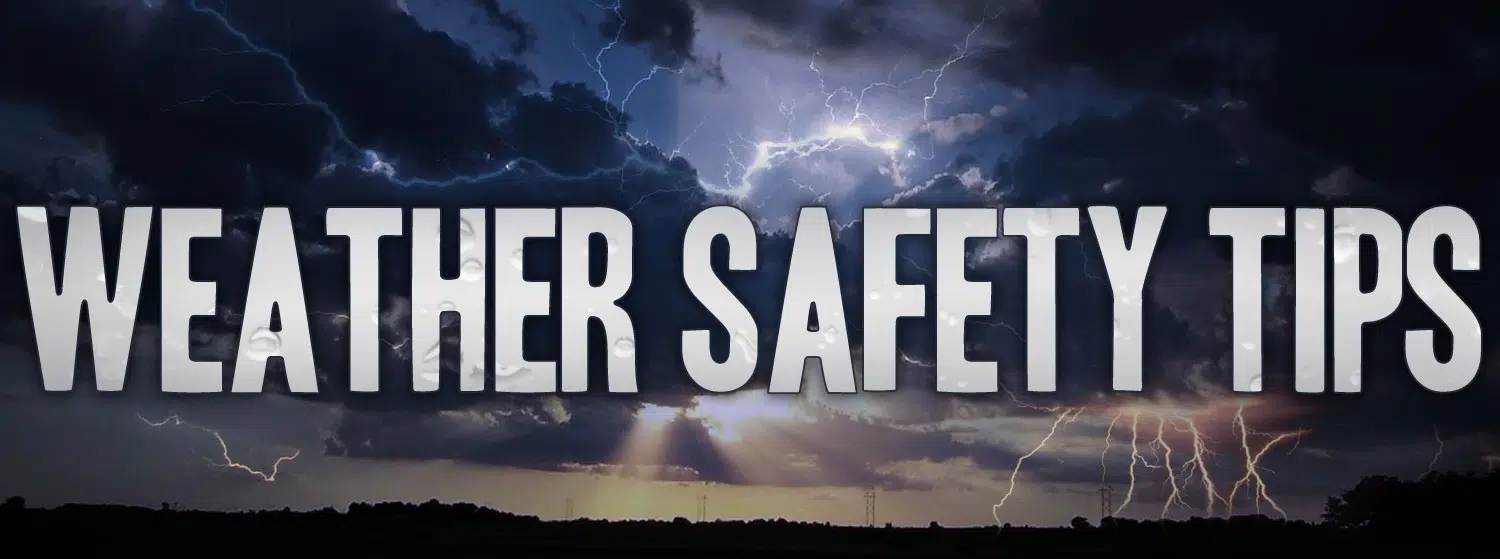
Follow these tips to prepare for Severe Weather Conditions!
Make a Communications Plan.
Your family members may not be together or at home during an emergency. Making a communications plan will enable you to contact each other and may help you reunite sooner. Basic steps in a plan includes making sure everyone knows where to go, how to contact each other, and meeting places if you can’t get back home.
Find a shelter.
At home:
- Go to the basement or small interior room on the ground floor; such as a closet, bathroom, or hallway.
- Get under the stairwell or a sturdy table and cover yourself with pillows or blankets.
- Avoid the corners and exterior walls of the house.
- Stay away from windows. Do not open the windows; it does not reduce damage to the structure.
- Mobile home residents should go to a shelter well before the storm reaches them. If there isn’t time or a shelter available; lie flat in a ditch, ravine, or culvert away from the home and cover your head.
In public facilities or large buildings:
- Go to the designated shelter, usually a room on the lowest level. Use the stairs, not the elevator.
- Stay away from large windows and skylights.
- Do not remain in large rooms with high, unsupported roofs; such as gymnasiums, halls, warehouses, or church sanctuaries.
If caught outside:
- Leave your vehicle. Lie flat in a low area like a ditch or culvert and cover your head. Choose a location clear of trees that may fall on you and watch for rising water from heavy rain.
- Do not take shelter under a highway overpass. You can be injured when strong winds and debris are channeled through the small opening under the bridge.
- Do not try to drive away from a tornado in a city, heavy traffic, or mountainous areas.
Have an Escape Route.
Isolated thunderstorms with intense heavy rain can lead to dangerous flash floods. Larger storm systems can cause widespread flooding that swells streams and rivers, covering roads and highways. You need to be react quickly if your home is threatened by rising water.
Have Your Radio Ready.
Receive the latest life-saving information via battery-powered or hand crank radio, or a NOAA Weather Radio with tone alert.
Keep Your Cell Phone Handy.
Cell phones can receive official messages through Wireless Emergency Alerts. This is a free service for which you do not have to sign up or download. Alerts are broadcast from cell towers in the vicinity of an emergency, so you will receive them for your current location.
Build a Kit.
Even in the summer, storms can cause power outages that last a day or two, so you still need to have emergency supplies at home. Essential items such as flashlights and batteries, a battery-powered radio, first aid kit, non-perishable food, and water for drinking and other uses should be ready when needed. Have a corded telephone to make and receive phone calls if the power is out at your residence or nearby cell tower.
If you live in a flood prone area, you also need to assemble a kit in a plastic tote or rolling suitcase to take with you if you need to evacuate. This kit should include cash, important documents, clothing, prescription medication and medical supplies, baby items, and pet supplies.
Know the terms.
The National Weather Service uses the following terms in their hazardous weather bulletins:
WATCH means severe thunderstorms, tornadoes, or flash floods are possible.
SEVERE THUNDERSTORM WARNING means a thunderstorm with wind gusts of 58 mph or higher or hail at least one inch in diameter is occurring. The definition of a severe thunderstorm does not include lightning; ALL thunderstorms contain lightning and should be considered dangerous.
TORNADO WARNING means a tornado has been sighted or indicated by radar. Take shelter immediately!





